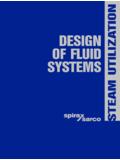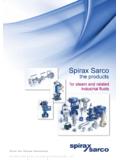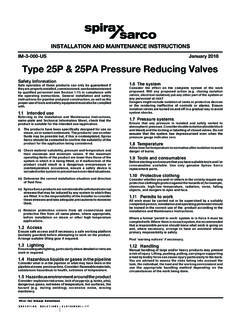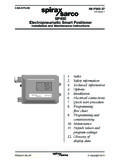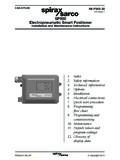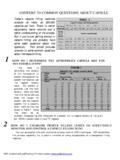Transcription of Healthcare steam systems - Spirax Sarco
1 Healthcare steam systems Innovations to improve energy efficiency,reduce risk and cut emissionsWhite Paper steam Executive The NHS targets its energy steam system innovations decarbonise new and existing NHS facilities steam or MTHW? Clean steam for sterilisation Applying innovation to steam systems Heating water using less energy Closed systems achieve maximum energy recovery Save energy and boost system performance with reverse osmosis Sub-cooling condensate can save 10% in energy Microturbines generate electricity from steam pressure reduction The low-carbon steam plant Spirax Sarco solutions for reducing Healthcare
2 Energy consumption and emissions EasiHeat steam -to-hot-water packaged solutions FREME flash steam and energy recovery system Reverse Osmosis systems reduce boiler fuel costs Spirax Eco-Save for extracting up to 10% more energy from steam systems Clean steam Generators Surveys and system audits Maintenance services Training ConclusionContentsThe UK s National Health Service (NHS) aims to reduce its CO2e emissions by 80% by 2050, compared to a 1990 baseline. Substantial reductions have already been made between 1990 and 2013, yet a 28% reduction is still required to align with the Climate Change Act target of a 34% reduction by 15% of the overall carbon footprint for the NHS and public health services is due to the energy consumed by buildings.
3 Using steam to provide hot water for space heating and domestic duties such as hand washing and cleaning, as well as for sterilisation services, is a significant contributor to the overall energy bill in the UK Healthcare is huge potential to save thousands of tonnes of emissions per year through the application of existing and innovative steam system technologies. The investments needed are relatively low and even small-scale projects can reap surprisingly high returns. Examples include replacing conventional hot water calorifiers with the latest compact steam -to-hot-water on demand systems , and improving systems to maximise the return of condensate to the boiler feedtank.
4 There are many opportunities for improving energy efficiency in steam systems . An excellent starting point is to engage a steam system specialist to review the existing installation, make initial improvement recommendations, then analyse and present them with a full lifecycle cost Executive SummaryThe energy-saving and other benefits available to the Healthcare sector are brought to life in a fly-through 140-second animation takes the viewer on a journey between the boiler house and various steam applications in a typical hospital to reveal how UK hospitals are reducing energy consumption, lowering emissions, minimising risk and ensuring compliance with industry guidelines and animation can be viewed at.
5 A smartphone or tablet to access the animation using this QR Code: Healthcare animation showcases steam system benefits to hospitalsThe NHS reports its greenhouse gas (GHG) emissions in carbon dioxide equivalent (CO2e). CO2e encompasses six GHGs: Carbon dioxide; Hydrofluorocarbons; Methane; Nitrous oxide; Perfluorocarbons; Sulphur hexafluoride. Using CO2e allows different greenhouse gases to be compared on a like-for-like basis relative to one unit of England alone, NHS buildings consume more than 400 million worth of energy every year1.
6 That energy accounts for around 15% of the overall carbon footprint for the NHS, public health and all local authority commissioned and provided adult social services in England, which is estimated to be 32 million tonnes of carbon dioxide equivalent (MtCO2e) 2 in 2012. The NHS, public health and social care system has set the goal of reducing carbon dioxide equivalent emissions across building energy use, travel and procurement of goods and services by 34% by 2020. Taking into account the reductions already made between 1990 and 2013, there is still a 28% reduction required to align with the Climate Change Act target of a 34% reduction by 20202 and to leave the organisation well placed to meet its 50% reduction target by NHS sees energy efficiency as one of three ways to reduce its energy use to contribute to lowering emissions, energy bills and energy demand.
7 The other two principles are reducing unnecessary usage and increasing the amount of low carbon energy. Reducing its energy use is recognised by the NHS as being important to address fluctuating fuel prices, growing global energy demands, reducing greenhouse gas emissions and ensuring a secure energy The NHS targets its energy consumption19901995200020052010201520202 02520302035204020452050 YearMt wedgeHSC system England GHG emissionsHSC system England forcast2013 baselineTrajectory to 202028% from 2013 and 34% from 19901990 baselineClimate change Act Trajectory50% Ta rget from 1990 baseline64% Ta rget from 1990 baseline80% Ta rget from 1990 baselineHealth and Social Care England Carbon FootprintCO2e baseline from 1990 to 2025 with
8 Climate Change targetsFigure 1: The NHS aims to reduce its CO2e emissions by 80% by 2050 (source: Sustainable, Resilient, Healthy People & Places , Sustainable Development Unit funded by the NHS) Healthcare steam systems1 NHS Carbon Reduction Strategy for England, Saving Carbon, Improving Health, the Sustainable Development Unit funded by the Module: Carbon Hotspots, the Sustainable Development Unit funded by the facilities are generally intensive energy users compared with many other buildings, because of their specialised requirements for 24-hour working.
9 steam is used widely in many hospitals to provide hot water, space heating and sterilisation services. There are good reasons for this. steam is an efficient and controllable heating medium that is proven to be reliable, safe, flexible and in steam plant control and monitoring technology in recent years provides many new ways for hospitals to substantially improve the efficiency of existing systems to help reduce energy consumption and lower carbon emissions. In 2010, the NHS Sustainable Development Unit published a report3 which estimated that improving the efficiency of heating plant has the potential to save almost 6,400 tonnes of CO2 emissions across the NHS in England by hospitals are also specifying and installing modern steam systems , underlining how steam has advantages over other heating technologies, such as Medium Temperature Hot Water (MTHW).
10 steam system innovations decarbonise new and existing NHS facilities With energy costs rising, energy efficiency is now seen as an optimal way of saving money. Initiatives to improve efficiency can often generate financial savings with relatively short payback periods. These actions often require the installation of new more energy efficient technologies into the estate or the refurbishment of existing technologies to ensure they operate more effectively. Organisations can use various mechanisms to fund upfront capital costs.
